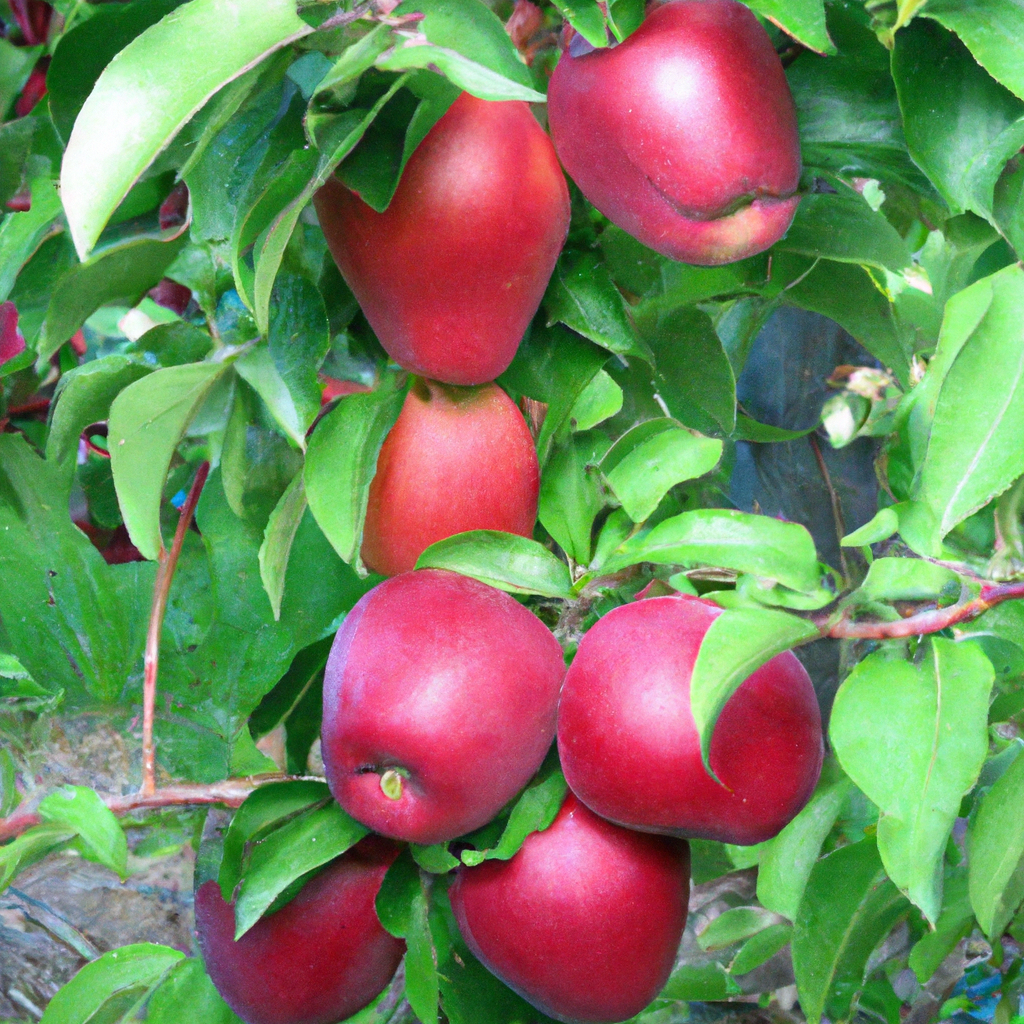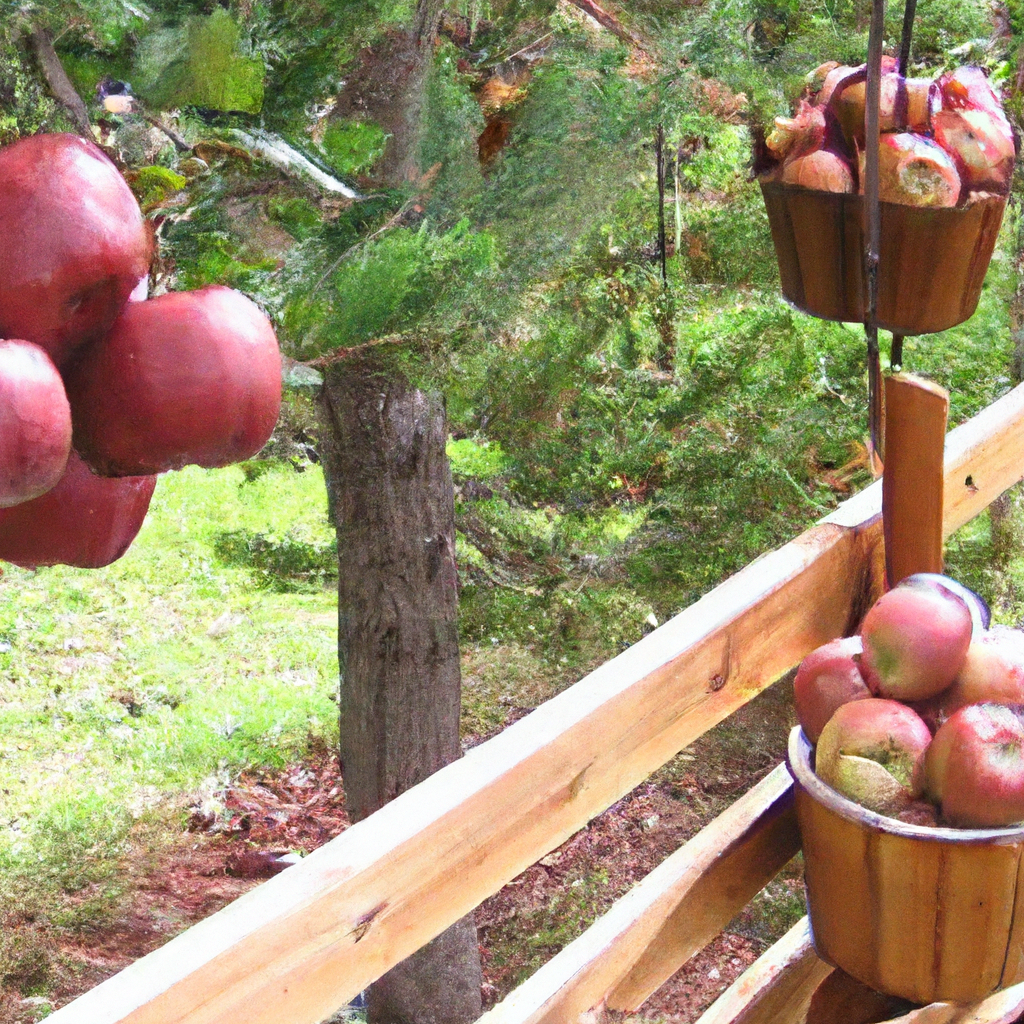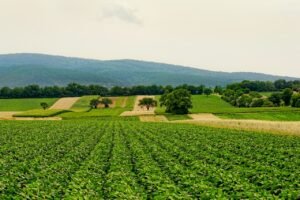
Imagine transforming your bustling city into a vibrant oasis filled with fruit-bearing trees lining the streets and adorning the parks. The benefits of fruit tree cultivation in urban areas are vast and varied, from providing fresh, organic produce to enhancing the aesthetics of the community. Not only does it contribute to a healthier and more sustainable lifestyle, but it also fosters a sense of pride and connection to nature. In this article, we will explore the numerous advantages of promoting fruit tree cultivation in urban areas and how it can positively impact both individuals and communities at large.

Importance of Fruit Tree Cultivation in Urban Areas
Urban areas often face challenges when it comes to food security, sustainable agriculture, air quality, and aesthetics. By cultivating fruit trees in these urban environments, we can address these issues and create multiple benefits for the community.
Enhancing Food Security
One of the main reasons for promoting fruit tree cultivation in urban areas is to enhance food security. By growing fruit trees locally, communities can have access to fresh, nutritious produce right in their neighborhoods. With the rising costs of food and concerns about food deserts, having fruit trees in urban areas can provide a sustainable solution.
Promoting Sustainable Agriculture
Urban fruit tree cultivation contributes to sustainable agriculture practices. By growing fruits locally, we reduce the carbon footprint associated with transportation and minimize the use of harmful pesticides and fertilizers. Additionally, urban fruit trees can be managed using organic and natural methods, leading to healthier and more sustainable food production.
Improving Air Quality
Fruit trees play a crucial role in improving air quality in urban environments. They absorb carbon dioxide, release oxygen, and filter out air pollutants such as particulate matter and volatile organic compounds. With the increasing concerns about air pollution and its impact on human health, planting fruit trees in urban areas is an effective way to combat these issues and create a healthier living environment.
Providing Shade and Enhancing Aesthetics
Urban landscapes often lack green spaces and shade. Fruit trees can provide much-needed shade and enhance the aesthetics of the urban environment. They add beauty, color, and texture to otherwise concrete-dominated spaces. Fruit trees also attract birds and wildlife, adding to the biodiversity of the area. By planting fruit trees in urban areas, we can create vibrant and inviting public spaces for everyone to enjoy.
Selecting the Right Fruit Trees for Urban Cultivation
Choosing the right fruit trees for urban cultivation is crucial to ensure successful growth and yield. Consider the following factors when selecting fruit trees for your urban environment.
Consider Local Climate and Conditions
Different fruit trees thrive in different climate and soil conditions. It is essential to select fruit trees that are well-suited to your local climate and the specific conditions of your urban area. Research the temperature requirements, frost tolerance, and sunlight needs of different fruit tree varieties before making your selection.
Opting for Dwarf or Semi-Dwarf Varieties
In urban areas where space is limited, dwarf or semi-dwarf fruit tree varieties are highly recommended. These varieties have smaller root systems and can be easily accommodated in smaller gardens or even containers. Dwarf and semi-dwarf fruit trees also tend to have a shorter height, making it easier to maintain and harvest the fruits.
Prioritizing Disease Resistance
Disease-resistant fruit tree varieties are essential for urban cultivation. Urban environments tend to have higher disease pressure due to the close proximity of trees and the potential for pests to spread rapidly. Selecting disease-resistant varieties helps reduce the need for chemical treatments and ensures a higher chance of success in growing healthy fruit trees.
Choosing Fruits with Shorter Maturation Periods
In urban areas where space is limited, it’s beneficial to choose fruit trees that have shorter maturation periods. This allows you to enjoy the fruits earlier and make the most of the limited space available. Some fruit trees, such as certain apple varieties, have early-maturing options that can be harvested in as little as two to three years after planting.

Optimal Planting Locations for Urban Fruit Trees
Selecting the right planting locations for urban fruit trees is essential for their successful growth and productivity. Consider the following factors when determining the optimal planting locations.
Utilizing Available Space
Urban areas often have limited space for fruit tree cultivation. Therefore, it is important to utilize the available space efficiently. Planting fruit trees in vertical gardens, containers, or utilizing espalier techniques can maximize the use of limited space and allow for multiple trees to be grown in a small area.
Considering Sunlight and Soil Requirements
Fruit trees require adequate sunlight to produce healthy fruit. Therefore, it is crucial to select planting locations that receive sufficient sunlight throughout the day. Additionally, consider the soil requirements of the chosen fruit tree varieties. Ensure the soil is well-drained, fertile, and suitable for the specific tree species.
Avoiding Obstructing Infrastructure
When selecting planting locations for fruit trees in urban areas, it is important to avoid obstructing infrastructure such as buildings, power lines, or underground utilities. Ensure that the trees are planted away from any potential hazards or obstructions that may interfere with their growth or pose safety risks.
Conducting Soil Quality Tests
Before planting fruit trees, it is recommended to conduct soil quality tests to assess the soil’s pH, nutrient levels, and composition. This allows for appropriate amendments and improvements to be made to the soil to optimize the growth and health of the fruit trees. Soil testing kits are readily available and can provide valuable insights to guide the planting process.
Preparing the Soil for Fruit Tree Cultivation
Preparing the soil before planting fruit trees is crucial for their long-term health and productivity. Follow these steps to ensure the soil is properly prepared.
Testing Soil pH and Amending as Needed
Begin by testing the soil pH using a soil testing kit. Fruit trees generally prefer a slightly acidic to neutral pH range. If the soil pH is outside the optimal range, make the necessary amendments to adjust the pH level. This may involve adding lime to raise the pH or sulfur to lower it.
Improving Soil Drainage
Good soil drainage is essential for the healthy growth of fruit trees. If the soil has poor drainage, consider incorporating organic matter such as compost or well-rotted manure to improve the soil structure and promote better drainage. Avoid planting fruit trees in areas prone to waterlogging, as this can lead to root rot and other issues.
Providing Sufficient Organic Matter
Adding organic matter to the soil is beneficial for the long-term health and fertility of fruit trees. Organic matter improves soil structure, enhances nutrient availability, and promotes beneficial microbial activity. Prior to planting, incorporate well-decomposed compost or organic matter into the planting hole or the surrounding soil.
Applying Fertilizers and Nutrients
Fruit trees require adequate nutrients for optimal growth and fruit production. Before planting, apply a balanced fertilizer that is suitable for fruit trees. This can provide the necessary nutrients to support early growth. Additionally, consider using organic fertilizers or slow-release fertilizer formulations to minimize environmental impact and ensure a steady release of nutrients over time.

Planting Techniques and Care for Urban Fruit Trees
Proper planting techniques and ongoing care are essential for the success of urban fruit trees. Follow these guidelines to ensure healthy growth and optimal productivity.
Pruning for Shape and Size Control
Pruning plays a crucial role in shaping fruit trees and managing their size in urban environments. Regular pruning helps maintain a manageable tree height, encourages proper airflow and light penetration, and controls the spread of diseases. It is important to learn proper pruning techniques and consider the specific requirements of each fruit tree variety.
Ensuring Adequate Watering
Water is crucial for the growth and health of fruit trees, especially during their establishment phase. Ensure that newly planted fruit trees receive sufficient water to support root development. Once established, monitor the soil moisture levels and water the trees deeply and evenly, especially during dry periods. Avoid overwatering, as this can lead to root rot and other issues.
Mulching and Managing Weeds
Mulching around fruit trees helps conserve soil moisture, suppress weed growth, and regulate soil temperature. Apply a layer of organic mulch, such as wood chips or straw, around the base of the tree, leaving a small gap around the trunk to prevent moisture accumulation. Regularly inspect the mulched area to remove any weeds that may compete for resources with the fruit tree.
Protecting from Pests and Diseases
Urban fruit trees are susceptible to pests and diseases. Regularly inspect the trees for signs of pest infestations or diseases such as leaf spots, fungal infections, or insect damage. Implement appropriate pest management measures, such as using organic pest control methods or introducing beneficial insects. Proper sanitation, including cleaning up fallen fruits and debris, can also help prevent disease spread.
Promoting Pollination in Urban Fruit Trees
Proper pollination is essential for fruit set and production. Follow these strategies to promote pollination in urban fruit trees.
Understanding Pollination Needs
Different fruit tree varieties have specific pollination needs. Some require cross-pollination, meaning they need pollen from a different variety to produce fruit. Others are self-fertile and can produce fruits without cross-pollination. Research the specific pollination requirements of your chosen fruit tree varieties and ensure proper pairing for successful fruit set.
Attracting Pollinators with Flowers and Water Sources
Attracting pollinators to urban fruit trees is crucial for successful pollination. Plant flowers nearby that bloom during the fruit tree’s flowering period to provide additional nectar and pollen sources. Create a water source, such as a small birdbath or shallow dish with fresh water, to attract and support pollinators in the area.
Utilizing Hand-Pollination Techniques
In urban areas with limited pollinator populations, hand-pollination can be an effective technique to ensure fruit set. This involves transferring pollen from the male flower parts to the female flower parts using a small brush or cotton swab. Carefully follow the hand-pollination instructions specific to the fruit tree variety to ensure maximum fruit set.
Considering Companion Planting for Enhanced Pollination
Companion planting involves growing compatible plants together to enhance pollination and attract beneficial insects. Research companion plants that are known to attract pollinators, such as herbs, flowering plants, or native wildflowers, and interplant them with your fruit trees. This can create a vibrant and diverse ecosystem that supports pollination and contributes to the overall health of the urban environment.

Maintaining and Harvesting Urban Fruit Trees
Proper maintenance and timely harvesting are essential for the continued productivity of urban fruit trees. Follow these guidelines to ensure healthy trees and a bountiful fruit yield.
Regular Pruning and Maintenance
Continual pruning and maintenance are crucial for the long-term health and productivity of urban fruit trees. Prune the trees annually to remove dead or diseased branches, improve canopy structure, and promote better airflow and light penetration. Regularly inspect the trees for any signs of pests or diseases and take appropriate measures to address them promptly.
Monitoring for Pests and Diseases
Vigilant monitoring for pests and diseases is essential in urban fruit tree cultivation. Regularly inspect the trees for signs of pest infestations, such as chewed leaves, webs, or insect activity. Look out for any symptoms of diseases, including spotting, discoloration, or wilting. Implement appropriate pest management measures and seek professional help if necessary.
Harvesting Fruit at Optimal Ripeness
Harvesting fruit at the optimal ripeness ensures the best flavor and quality. Different fruit varieties have specific ripening indicators, such as color, firmness, or scent. Research the specific harvesting guidelines for your chosen fruit trees and harvest the fruits when they are at their peak ripeness. Avoid leaving the fruits on the tree for too long, as they may become overripe and susceptible to pests.
Preserving and Utilizing Fruit Yield
Once harvested, it’s important to promptly utilize or preserve the fruit yield to avoid spoilage. Explore various methods of food preservation, such as canning, freezing, drying, or making jams and preserves. Share the surplus fruit with friends, family, or donate to local food banks or community organizations. Making the most of the fruit yield ensures minimal waste and encourages a sustainable approach to fruit tree cultivation.
Addressing Challenges in Urban Fruit Tree Cultivation
While urban fruit tree cultivation offers numerous benefits, it also poses certain challenges. Consider the following strategies to address these challenges and ensure successful fruit tree cultivation in urban areas.
Limited Space and Resource Constraints
The limited space available in urban areas can be a challenge for fruit tree cultivation. Maximize the use of available space through vertical gardening, container gardening, or community orchards. Utilize innovative techniques such as espalier or trellises to grow fruit trees in small spaces. Collaborate with neighbors or community organizations to pool resources and create shared gardening spaces.
Overcoming Soil Contamination
In urban areas, soil contamination can be a concern due to historical land uses or proximity to industrial areas. Conduct soil tests to assess the level of contamination and take appropriate measures to mitigate it. Remediation techniques, such as soil amendments, phytoremediation, or raised bed gardening, can help overcome soil contamination and ensure safe fruit tree cultivation.
Mitigating Urban Heat Island Effects
Urban heat island effects, characterized by higher temperatures in urban areas compared to surrounding rural areas, can negatively impact fruit tree growth and productivity. Implement cooling strategies, such as creating shade structures, using reflective mulch, or incorporating green roofs or vertical gardens. These techniques can help mitigate the heat island effects and create a more favorable microclimate for fruit tree cultivation.
Managing Potential Conflicts with Infrastructure
Urban fruit tree cultivation should take into consideration potential conflicts with infrastructure, such as buildings, utilities, or sidewalks. Proper planning and strategic placement of fruit trees can help minimize these conflicts. Consider consulting with local government entities, urban planners, or arborists to ensure compliance with regulations and guidelines.

Community Engagement and Collaboration in Urban Fruit Tree Cultivation
Community engagement and collaboration play a vital role in the success and sustainability of urban fruit tree cultivation. Consider the following strategies to engage the community and foster collaboration.
Creating Community Orchards
Community orchards are gathering spaces where a variety of fruit trees are planted and cared for collectively. These spaces provide opportunities for community engagement, education, and shared harvests. Collaborate with local organizations, schools, or residents to establish community orchards in suitable public locations and organize regular working bees or gardening sessions.
Organizing Workshops and Training Programs
Organize workshops and training programs to educate community members about fruit tree cultivation in urban areas. Topics can include planting techniques, pruning, pest and disease management, and harvesting. Encourage participation from local gardening or horticultural experts to create a learning environment that empowers individuals to grow their own fruit trees.
Encouraging Fruit Tree Adoption
Promote the adoption of fruit trees by encouraging community members to plant and care for their own fruit trees. Provide resources and guidance to help individuals select suitable fruit tree varieties, prepare the soil, and maintain the trees. Foster a sense of responsibility and ownership within the community, and celebrate successful fruit harvests to inspire others to get involved.
Collaborating with Local Organizations
Collaborate with local organizations, such as community gardens, schools, local government entities, or environmental groups, to further support urban fruit tree cultivation. Share resources, expertise, and knowledge to create a network of support and foster a culture of sustainability within the community. Leverage the strengths of each organization to maximize the impact of urban fruit tree cultivation.
Promoting Policy Support for Urban Fruit Tree Cultivation
Advocating for policies that support urban fruit tree cultivation is essential to create a conducive environment for its success. Consider the following strategies to promote policy support.
Advocating for Urban Agriculture Policies
Advocate for the development and implementation of urban agriculture policies that promote and support fruit tree cultivation. These policies can include guidelines for planting fruit trees in public spaces, incentives for homeowners to plant fruit trees, or regulations that prioritize access to land for community orchards. Engage with local policymakers, community leaders, and advocacy groups to drive the development of urban agriculture policies.
Lobbying for Incentives and Grants
Lobby for incentives and grants that encourage individuals and communities to engage in fruit tree cultivation. This can include financial incentives for homeowners to plant fruit trees, grants for community orchard projects, or tax breaks for businesses that support urban agriculture. Collaborate with local organizations, businesses, and nonprofits to demonstrate the economic, environmental, and social benefits of urban fruit tree cultivation.
Engaging with Local Government Entities
Engage with local government entities, such as city councils or urban planning departments, to embed fruit tree cultivation into urban development plans. Advocate for the integration of fruit trees in public spaces, parks, schools, and streetscapes. Collaborate with urban planners and arborists to ensure that urban fruit tree cultivation is considered in infrastructure planning and landscaping projects.
Building Partnerships for Long-term Success
Build partnerships with organizations and institutions that can provide long-term support for urban fruit tree cultivation. This can include collaborations with universities, research institutions, or agricultural extension services to conduct research, provide training, and share best practices. Work with local businesses, such as nurseries, to ensure the availability of quality fruit tree varieties for urban cultivation.
Promoting fruit tree cultivation in urban areas offers numerous benefits, from enhancing food security and improving air quality to fostering community engagement and collaboration. By selecting suitable fruit tree varieties, preparing the soil, and providing proper care, urban fruit trees can thrive and contribute to a healthier and more sustainable urban environment. Through community involvement and policy support, we can create a fruitful future for our urban landscapes.







